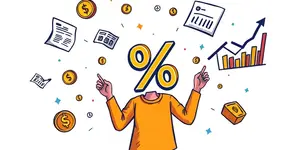Understanding credit utilization is essential for anyone looking to improve their credit health and unlock financial opportunities. This article will guide you through the concept, its significance, and actionable strategies to master this critical factor.
Understanding Credit Utilization
Credit utilization refers to the percentage of your available revolving credit that you are using at any given time. This metric is calculated by dividing your total credit card balances by your total credit limits and multiplying by 100. For example, if you carry a $1,000 balance across cards with a combined $5,000 limit, your utilization rate is (1,000 / 5,000) × 100 = 20%.
Credit bureaus and lenders closely monitor credit utilization because it signals how effectively you manage revolving debt. Maintaining prudent usage demonstrates financial discipline, while high balances can suggest potential distress.
Why Credit Utilization Matters
Credit utilization plays a pivotal role in credit scoring. In fact, it accounts for about 30% of your score in the FICO model, making it the second most influential factor after payment history. VantageScore and other newer models similarly emphasize utilization, labeling it as “highly influential.”
- Payment History: 35% of FICO score
- Credit Utilization: 30% of FICO score
- Length of Credit History: 15%
- Credit Mix: 10%
- New Credit: 10%
When lenders see a low utilization rate, they perceive you as a lower risk. Conversely, a high utilization rate can lead to higher interest rates or loan application denials.
Effects on Your Credit Score
How your utilization rate correlates with potential score changes:
Keep in mind that scoring models typically have "no memory" for utilization, meaning if you pay down balances, your score can rebound quickly. Still, consistent high usage may have lingering effects depending on the model.
Strategies to Manage Your Credit Utilization
Effectively managing your credit utilization is both simple and empowering. By implementing targeted strategies, you can see tangible improvements in your credit score within weeks or months.
- keep utilization under 30% across all cards.
- aim for under 10% for optimal scoring impact.
- Request credit limit increases without adding new balances.
- Pay balances early or make multiple payments each month.
- Use balance alerts and credit monitoring tools for real-time tracking.
By spreading your spending across multiple cards and timing payments before statement dates, you can lower reported balances and favorably influence your next credit report.
Advanced Considerations and Myths
While basic utilization tactics serve most consumers well, there are advanced factors to consider, especially if you’re aiming for premium credit scores or applying for large loans.
First, understand the difference between overall and per-account utilization. Even if your combined utilization is low, a single maxed-out card can signal risk. Strive to keep each account below recommended thresholds rather than focusing solely on the total.
Second, newer scoring models like FICO 10T and VantageScore 4.0 incorporate trended data. These systems assess your utilization patterns over time, offering a more nuanced view of your credit behavior. Maintaining consistently low balances week after week can yield better outcomes than a single low reading.
Finally, address common myths:
- 0% utilization is not always ideal—it can suggest inactivity and shorten your length-of-credit-history metric.
- Utilization has minimal lingering effects—scores adjust as soon as balances decrease.
- Closing unused cards can backfire by reducing total credit limits and raising your utilization ratio.
Understanding these nuances allows you to refine your approach and maximize credit score gains.
Practical examples: Imagine you have three credit cards, each with a $5,000 limit, and you carry a $1,500 balance on one card. Your overall utilization is 10% (1,500 / 15,000), but that single card shows 30% utilization. By transferring $500 to another card or paying down the first balance, you can align both overall and individual rates with best practices.
Consistently low utilization not only improves your credit score but also demonstrates financial responsibility to lenders, insurers, and landlords. It opens doors to lower interest rates, better loan approvals, and premium credit card offers.
On an emotional level, mastering credit utilization can transform anxiety into confidence. Seeing your score rise as you implement disciplined habits instills a sense of control over your financial future. You learn that everyday decisions—like timing credit card payments—translate into real progress toward personal goals.
From a practical standpoint, integrate the habit of checking your utilization into your monthly financial routine. Set calendar reminders to review statements, automate payments when possible, and explore credit limit increase offers. Simple, consistent actions compound into significant long-term benefits.
Remember: credit utilization is one of the most actionable levers you can pull to improve your credit health. Unlike length of credit history, which requires patience, utilization responds rapidly to targeted efforts. It offers both immediate feedback and sustained rewards.
Whether you’re rebuilding after setbacks or optimizing an already strong profile, prioritizing credit utilization is a cost-free, high-impact strategy. It democratizes credit improvement—anyone with a card can use this tool to build trust with lenders and access better financial products.
Ultimately, understanding and managing your credit utilization is more than a numerical exercise. It symbolizes disciplined stewardship of resources and drives meaningful change in your financial journey. Embrace this knowledge, take consistent action, and watch as new opportunities unfold.
References
- https://www.experian.com/blogs/ask-experian/credit-education/score-basics/credit-utilization-rate/
- https://www.equifax.com/personal/education/debt-management/articles/-/learn/credit-utilization-ratio/
- https://www.capitalone.com/learn-grow/money-management/credit-utilization-and-credit-score/
- https://financialtips.bankatpeoples.com/credit-and-debt/credit/article/how-credit-card-utilization-impacts-your-credit-score
- https://www.bankrate.com/credit-cards/advice/credit-utilization-ratio/
- https://www.cbsnews.com/news/how-credit-utilization-affects-your-credit-score-and-what-to-do-about-it/
- https://www.centier.com/resources/articles/article-details/how-does-credit-utilization-affect-your-credit-score
- https://www.lfcu.org/news/managing-money-credit/understanding-credit-utilization-how-it-impacts-your-score/










